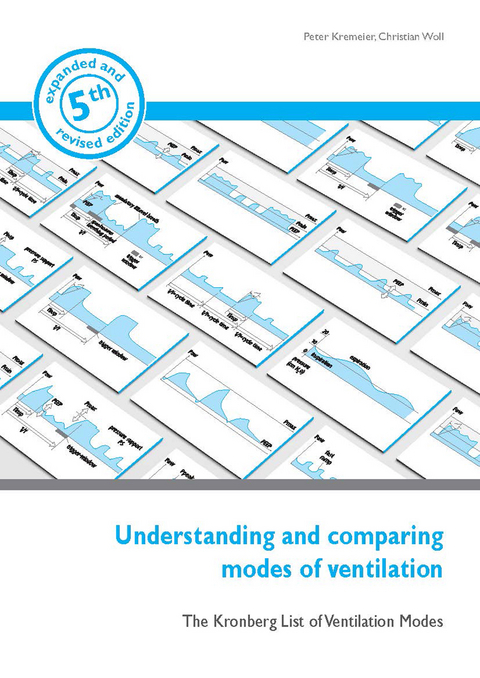Understanding and comparing modes of ventilation
Pabst Science Publishers (Verlag)
978-3-95853-608-1 (ISBN)
Over the years, there have been a number of voluntary initiatives to standardise the ventilation taxonomy. Robert L. Chatburn published the first classification scheme for ventilation modes in 1992, followed by updated versions in 2007 and 2014, respectively, as taxonomies for ventilation modes. Unfortunately, these terms did not become established in practice and were mostly ignored by medical device manufacturers. Solutions for a uniform nomenclature for ventilation and a standardized classification system for ventilation modes have also been pursued on a European level. A uniform nomenclature was published for the first time in the second half of 2019, in the form of the international standard ISO 19223:2019. The published standard has been an important step on the way to manufacturer-independent naming of ventilation modes to reduce potential user errors and improve comparability.
We hope that the Kronberg List will go some way towards guiding you through the labyrinth of ventilation modes, and that it proves useful as a quick reference guide in bedside decision-making. Comparison tables that acknowledge differences between different manufacturers' devices, and which provide detailed descriptions of all relevant characteristics, will make it easy for the user to compare the relevant ventilation methods. Due to the increasing relevance of outpatient ventilation devices, so-called homecare ventilation devices were included as well. Schematic explanations of different nomenclatures were included to facilitate studying the international professional literature. The new edition has been completely revised and expanded.
Preface
Nomenclatures in comparison
Chatburn 2007
Chatburn 2014
ISO standard 19223:2019
Volume-controlled ventilation modes
VCV
PLV
VC-SIMV
Optional VCV
Flexible VCV
Pressure-controlled ventilation modes
PCV
PCV ST
BiLevel
BiLevel ST
Mandatory BiLevel
PC-SIMV
PC-APRV
Optional BiLevel
Spontaneous ventilation modes
CPAP
PSV
Dynamic PSV
Proportional PSV
PAPS
HFOT
Hybrid ventilation modes
Dynamic BiLevel
Dual BiLevel
Flexible BiLevel
Volume-adaptive BiLevel
Dynamic BiLevel ST
Dual BiLevel ST
Closed-loop ventilation modes
WOBOV
ALPV
INTELLiVENT-ASV
SmartCare
Automode
Measurement values, indices
P.01: Occlusion pressure measurement
RSBI: Rapid Shallow Breathing Index
PEEPi: Intrinsic PEEP
Intrinsic PEEP measurement in spontaneously breathing patients
Inflection points: LIP / UIP / PMC
C20/C -Index
TPP exp: end-expiratory transpulmonary pressure
TPP insp: end-inspiratory transpulmonary pressure
DPeso: Oesophageal pressure amplitude
ΔPes/ΔPaw (Baydur test)
Detection of patient-ventilator asynchrony
PTP: Pressure Time Product
RCexp: Expiratory time constant
Intra-abdominal pressure monitoring (IAP)
WOB: Work of Breathing
POB: Power of Breathing
MIP: Maximum Inspiratory Pressure
| Erscheinungsdatum | 09.10.2020 |
|---|---|
| Sprache | englisch |
| Maße | 105 x 148 mm |
| Einbandart | kartoniert |
| Themenwelt | Medizin / Pharmazie ► Medizinische Fachgebiete ► Anästhesie |
| Medizin / Pharmazie ► Medizinische Fachgebiete ► Intensivmedizin | |
| Schlagworte | critical care • ventilation • Ventilation Modes |
| ISBN-10 | 3-95853-608-5 / 3958536085 |
| ISBN-13 | 978-3-95853-608-1 / 9783958536081 |
| Zustand | Neuware |
| Haben Sie eine Frage zum Produkt? |
aus dem Bereich




